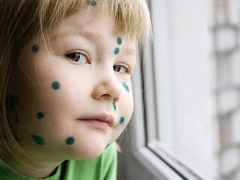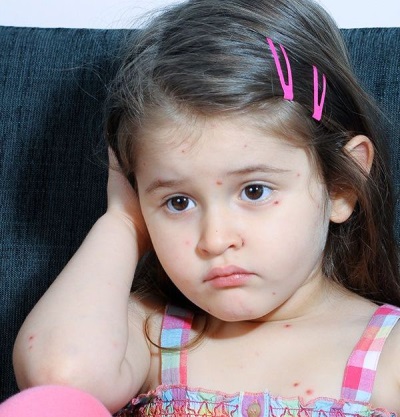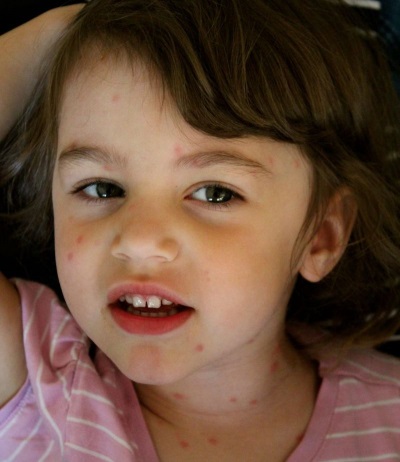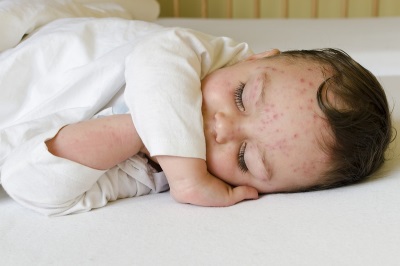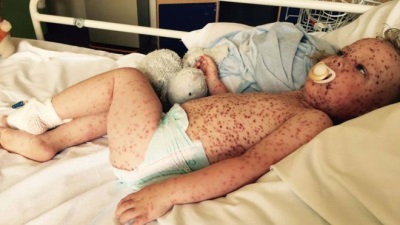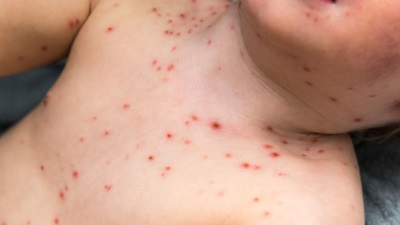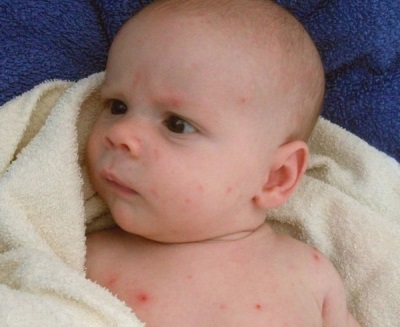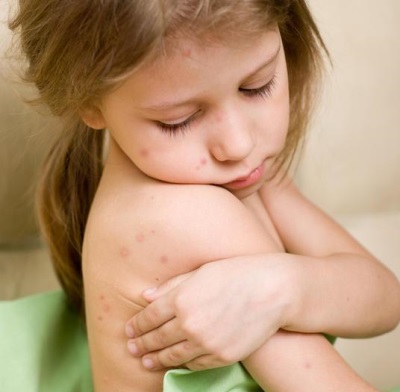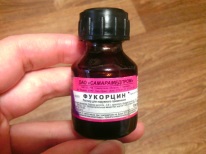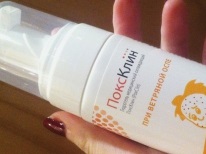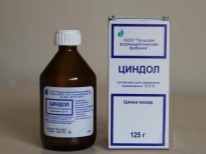How many days do you have to be at home with chicken pox?
Chickenpox is a common and highly contagious childhood disease. This infection is most often detected in children 2-7 years of age in a mild form, although sometimes both infants, adolescents, and adults are ill, suffering from chicken pox is much more difficult.
The causative agent of this disease, although unstable outside the human body, is able to fly with particles of mucus by several tens of meters, and its susceptibility reaches 90-100%. That is why, when a chickenpox is detected in a children's team, quarantine is announced, and sick babies are isolated. At the same time, parents are interested in whether such measures are necessary, is it really impossible to contact a sick person with a healthy one, and for how long do he sit on sick leave with chicken pox?
How do you get chickenpox?
The disease is transmitted mainly by airborne droplets from patients during their infectiousness period:
- On the last day of the incubation period, when the symptoms of the disease are still absent.
- During the entire acute period, when pimples jump out on the skin and the temperature is elevated.
- Another 5 days after the last bubbles come out.
Infection is also possible by contact, if you touch the bubbles, because within each of them there are many viruses that cause chickenpox. In addition, the infection is transmitted from the mother to the fetus during gestation.
Since the virus does not tolerate the effects of various environmental factors, it quickly (within 10-15 minutes) dies outside the body of the patient, therefore, through third parties and objects, chickenpox is practically not transmitted.
The source of the virus for a child can be an elderly person with shingles, as the causative agent of these two diseases is the same. The fact is that the varicella-zoster virus after recovery does not leave the body, but remains in the tissues of the nervous system, appearing in people over 40 in the form of herpes zoster. If the baby has contact with such a rash, he will get chickenpox.
Symptoms of the disease
By first featured diseases determine that it is chickenpox, it is very difficult. The child complains of a headache, sore throat, weakness, refuses to eat, does not sleep well, loses interest in games. So begin any other childhood infections. But as soon as on the same or the next day the body temperature rises and a characteristic blistering rash appears, the diagnosis becomes clear without additional examinations.
First, small specks of pink-red color appear on the skin of the body of the sick child. They quickly turn into papules (such acne is like mosquito bites), and then become single-chamber bubbles with a clear liquid inside. Further, the contents of the vesicles become cloudy, bubbles burst, and crusts form from above. If they are not damaged, the rash passes without a trace.
Note that chickenpox is very itchy, bringing significant discomfort to the sick child. In addition, while the first rash heals, new rashes emerge near the crusted vesicles on other areas of the skin (in the head, on the extremities).At the same time, with each subsequent “wave” of rash, the body temperature rises again.
Why are children with chickenpox insulated?
Most babies under 10 years of age have chicken pox quite easily, so many parents seem to be harmless and do not understand the need for quarantine.
They lose sight of the fact that for some categories of people such a children's infectious disease is a serious danger:
- For children with immunodeficiency.
- For kids who have chronic pathologies.
- For teens and adults who did not have chickenpox in childhood.
- For pregnant women in the first trimester of gestation, if they are not vaccinated and not sick before.
To avoid contact with such people, ill children should not go to the kindergarten and go outside.
How long does chickenpox last?
To say exactly how many days get sick with chickenpox is impossible. The duration of the disease in a child depends on many factors, for example, on his state of health, age, the presence of chronic pathologies, the activity of the virus and many others.
In general, during the varicella, it is possible to distinguish such periods:
- Incubation. It starts from the moment of infection and ends with the first clinical symptoms of the disease. During this period, the average duration of which in children is 2 weeks (the minimum is 7 days, and the maximum is 21 days), the child has no symptoms of infection and it is impossible to determine that he has already started to have chickenpox.
- Premonitory. This is the name of the non-durable (1-2 days) period during which the child feels unwell, but the rash is still absent, therefore, it is not yet possible to diagnose chickenpox.
- Rash. In this period, the disease manifests itself especially actively, and the child is very contagious to others. Rashes can appear on the skin only once, but more often they occur in "waves" and last for 2-9 days.
- Recovery. Such a period of illness begins with the appearance of the last "fresh" vesicles on the skin. After 5 days, the child is no longer considered infectious. The crusted rash stays on the body for 1-2 weeks, after which the crusts fall off and the skin heals completely.
As you can see, the duration of each of the periods may be different. When a child has a mild form, after a short prodromal period, several bubbles appear on the same day and within 1-2 days they become covered with crusts, that is, the disease lasts for about 7-8 days. With severe course and the appearance of complications, the disease can be delayed for several weeks.
Children who have had chicken pox are protected from such an infection until the end of their lives. Re-infection is possible in extremely rare cases and is usually associated with problems with the immune system. So worry about how many years immunity from chickenpox your child will receive is not worth it. Even with a mild form of protection from the virus will be resistant and will last for a lifetime.
How many days do you have to be at home for a sick child?
Duration of home quarantine In each case, the chickenpox is determined individually. Usually, doctors are guided by the time of the appearance of the last vesicles and allow walks 5 days after that.
However, children who attend kindergarten and school are advised to hold at home a little longer, because immunity after chicken pox decreases. Usually, the child is discharged after the disappearance of all crusts from the skin, when the spots from the rash will pass. Most often this occurs after 2 weeks from the onset of the disease.
Treatment
Most cases of chickenpox in childhood being treated home with the use of symptomatic drugs. Only severe forms of chicken pox are required to be treated in the hospital with antiviral drugs.
The child is recommended bed rest, plentiful drinking, food sparing for the digestive tract.A rash to prevent infection and relieve itching is smeared with green paint, fucorcin, PoxCline, Zindol, soda solution and other local means. If the itch is very pronounced, antihistamine and sedative medicines are collected along with the pediatrician.
